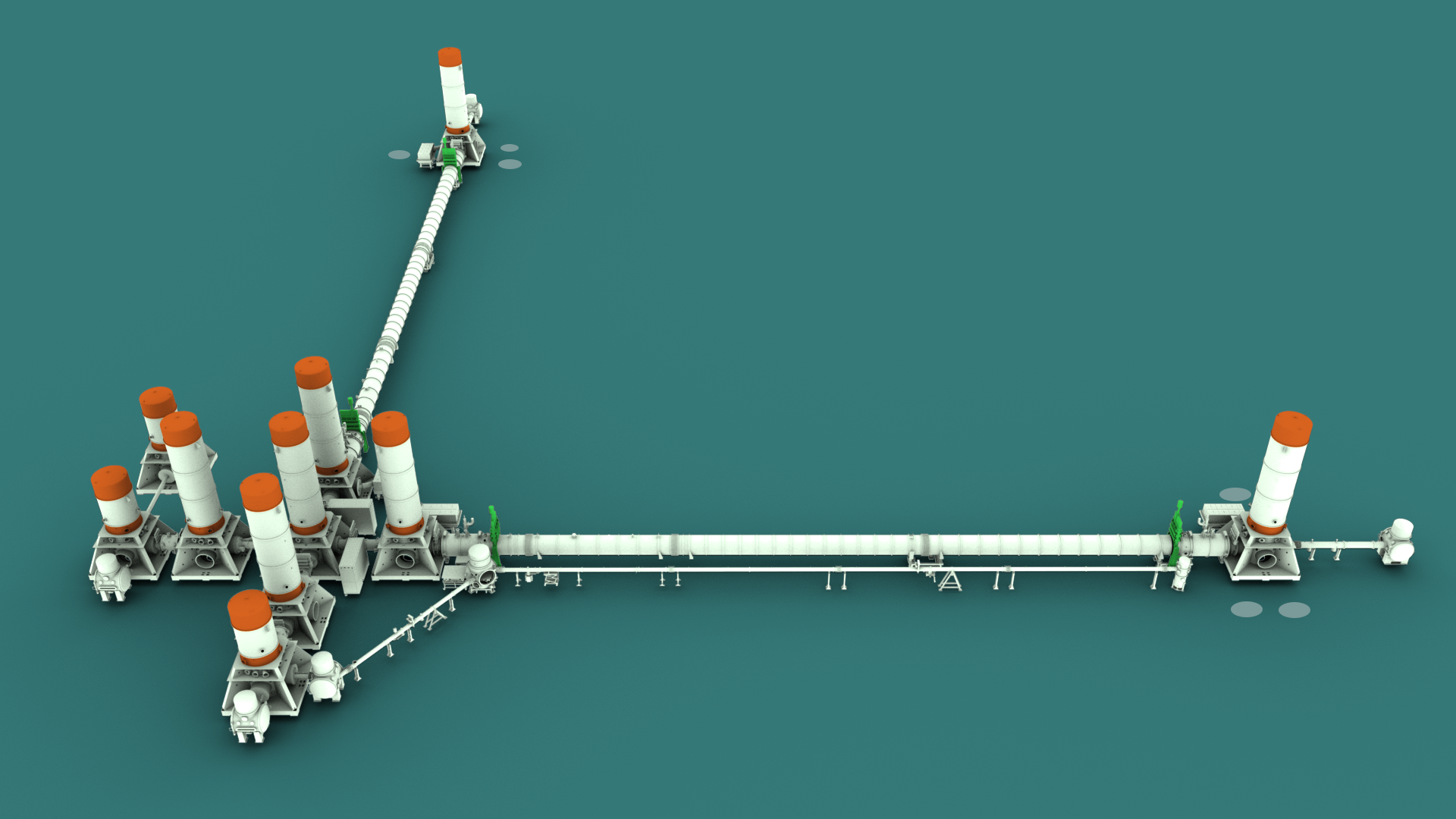
THE LASER
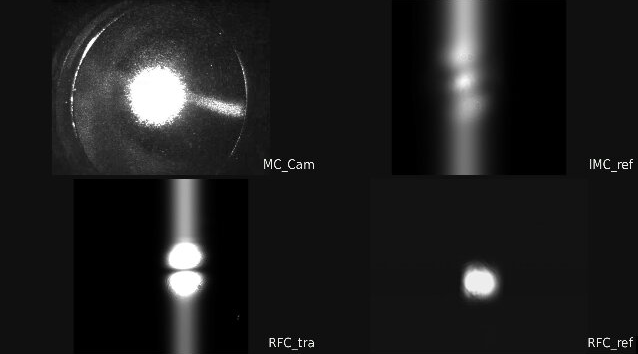
The laser is an essential piece of hardware for Virgo since it is the light source at the entrance of the interferometer. During the recent upgrade, a new fiber laser delivering 50 Watt has been installed. That is twice more power available compared to what was used during the previous data taking period. Even if more powerful the new laser must keep outstanding optical properties and generate a laser beam very stable in amplitude and frequency.
The sensitivity of Virgo will be increased thanks to this extra light power as it will allow more photons to reach the detection side, reducing the statistical noise due to the quantum nature of light.
AUXILIARY LASERS
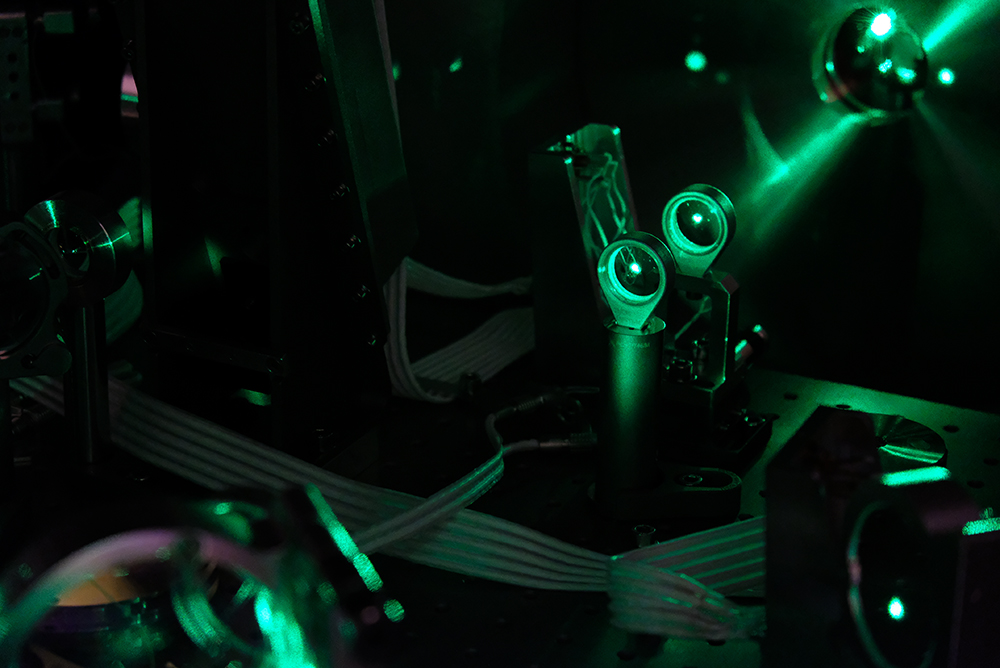
A new set of auxiliary lasers were installed in this upgrade. These additional lasers have a green wavelength (or color) different from the much more powerful infrared main laser and so they can easily be separated and dealt with independently. They can control the long arm cavities independently of the main laser, so they help to bring the detector to its operating point where the sensitivity is maximised and data can be recorded.
SIGNAL RECYCLING MIRROR
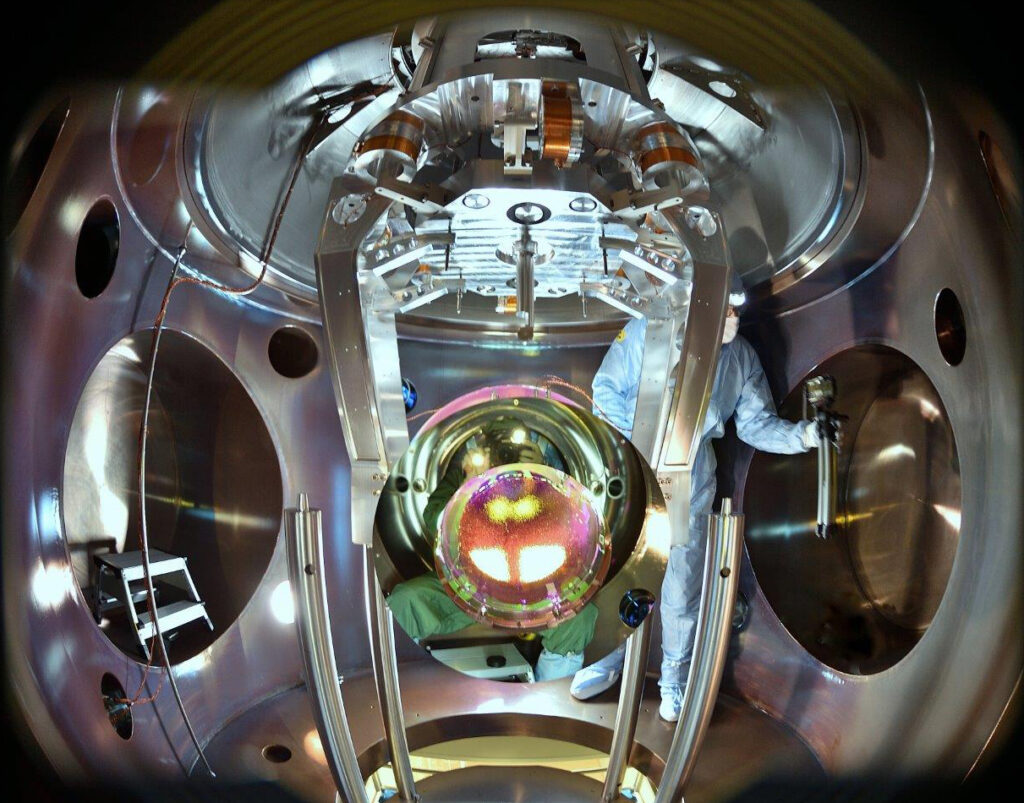
The installation of signal recycling mirror is probably the most important upgrade of the first phase of AdV+. During O2 and O3 observing runs, a lens, suspended from the 8-m long SR superattenuator, was simply focalizing the laser beam, after its long journey inside the 3 km-arms, on the output bench of photodiodes. In 2020 that lens has been replaced with a semi reflective mirror that, together with the beam-splitter, constitute a tunable optical cavity. Changing the relative position of the two mirrors is now possible to modify the frequency response of the interferometer, reducing its noise in the band most relevant for detecting binary black hole coalescences and neutron star merges. The sensitivity improvement will increase our observing horizon, allowing us to detect about one gravitational wave source every day.
DETECTION SYSTEM
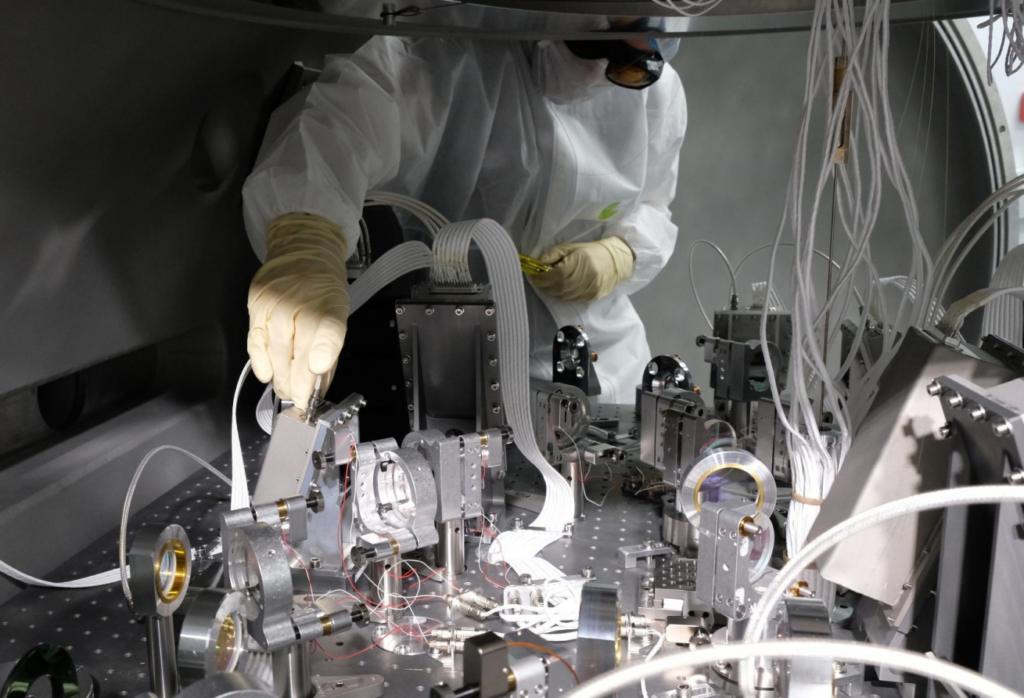
The detection system is made of suspended and in-vacuum benches hosting optics and photodetectors to extract the interferometer beams. It also includes the electronics needed to convert the optical signal measured by the photodetectors into an electrical signal that is then digitized and recorded.
The photodiodes have been upgraded to allow the use of higher power. Additional light traps (called baffles) have been positioned to block the parasite light. Finally a new small filtering cavity has been built and installed to replace the 2 previous ones. This new cavity will have lower optical loss with better filtering capability.
HEATING, VENTILATION AND AIR CONDITIONING SYSTEM
The Heating, Ventilation and Air Conditioning system (HVAC) of Virgo takes care of clean air flows and climatization of all the experimental areas and clean rooms in Virgo. Noise investigations on the HVAC systems are complex because of the extension of the apparatus and the difficulty in identifying the main culprits among the multiplicity of mechanical, seismic, acoustic and electromagnetic noise couplings with the interferometer impairing the sensitivity. The infrastructure components that will be the object of mitigation actions during the AdV+ project are: the air circulators (fans), the air distribution (ducts), the cold and hot water production (chillers, heaters) and the water distribution systems (pumps, pipes) of the central building, the two terminal buildings (North and West) and the mode cleaner building.
NEW IMC PAYLOAD + INSTRUMENTED BAFFLE
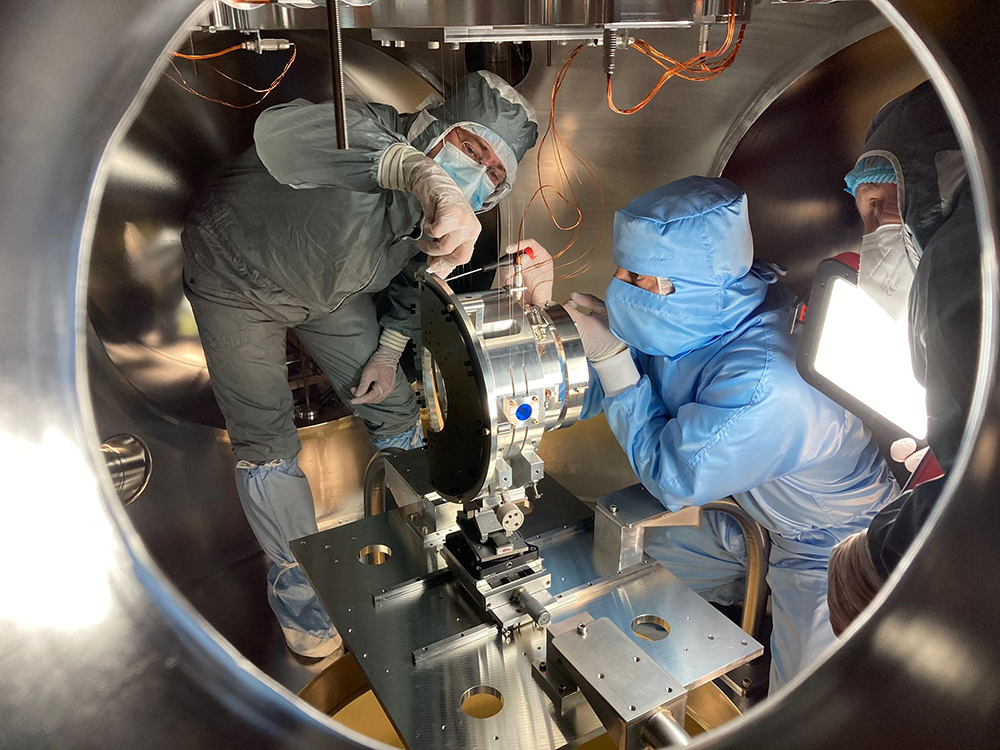
Before being injected into the interferometer, the laser beam is sent to a 144 m long triangular cavity, called Input Mode Cleaner (IMC). It consists of two flat, close-by mirrors on a suspended bench and a curved, intermediate mirror at the far vertex of the triangle: this latter mirror hangs from a dedicated suspension in a dedicated vacuum tower. The IMC cleans the spatial profile of the laser beam and reduces the laser fast frequency jitter.
In order to increase the operation robustness and performance of the IMC, the payload at the IMC corner have been replaced: improvements include both the mechanics and surface quality of the mirror. Furthermore, the payload now hosts plates to absorb stray light which have been instrumented with photon sensors, in order to gain more knowledge on the distribution of the noisy stray light.
NEWTONIAN NOISE REDUCTION
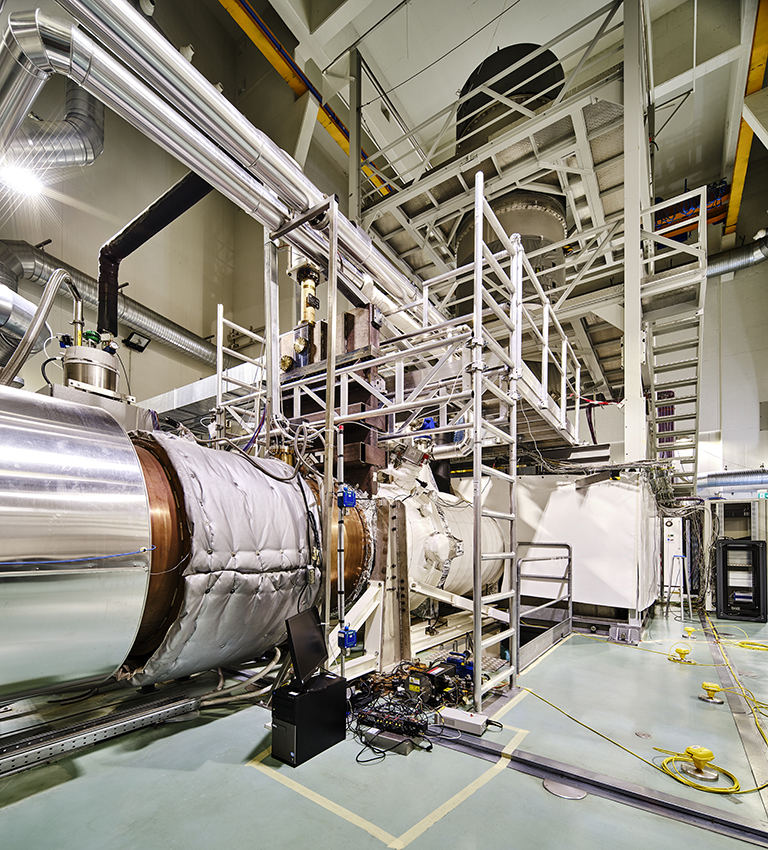
Terrestrial gravity fluctuations, known as Newtonian noise (NN),is predicted to be a limiting noise source for ground-based gravitational-wave detectors. The sources of NN are mass density fluctuations of both atmospheric and seismic origin. This kind of noise cannot be shielded, and the actions performed by scientists are mitigation
of sources and subtraction of this noise from interferometer data.
VACUUM IMPROVEMENTS
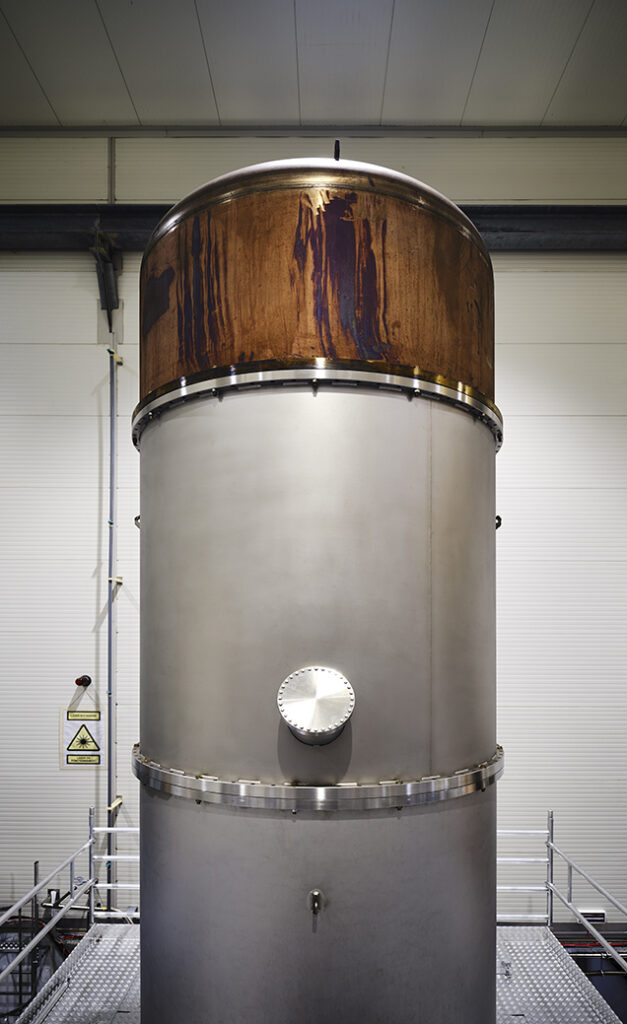
In the first phase of AdV+ upgrade, there have been an improvement of the vacuum level of the so-called central area, where all the optical components of the interferometer, except the end and mode-cleaner mirrors, are located. In particular the metal rings that seal the vacuum chambers on two of the most important suspensions, injection and detection, that support the benches hosting respectively the laser and the photodiodes, has been replaced. Moreover, some leaking defects have been corrected or mitigated. These activities have reduced the amount of residual air inside the detector improving the general vacuum level.
SCATTERED LIGHT MITIGATION
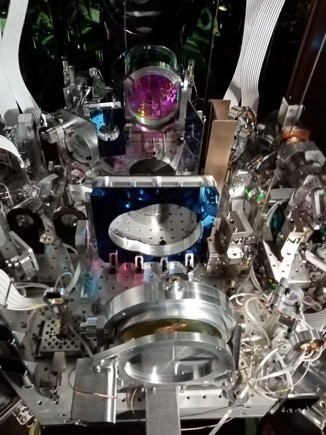
For a variety of reasons that cannot be fully avoided, some light still leaves the main path and can later re-enter the interferometer after being reflected by some vibrating structures, so causing additional noise: either by mimicking a fake gravitational wave signal at the detection port of the interferometer or by spoiling the control signals needed to keep the working point of the Virgo detector.
After a careful analysis of the stray light, absorbing plates have been installed in selected places on the tables supporting the optics of the system that injects the light into the interferometer: this is done to stop the unwanted light and to avoid it polluting the controls of the interferometer.
FREQUENCY DEPENDENT SQUEEZING
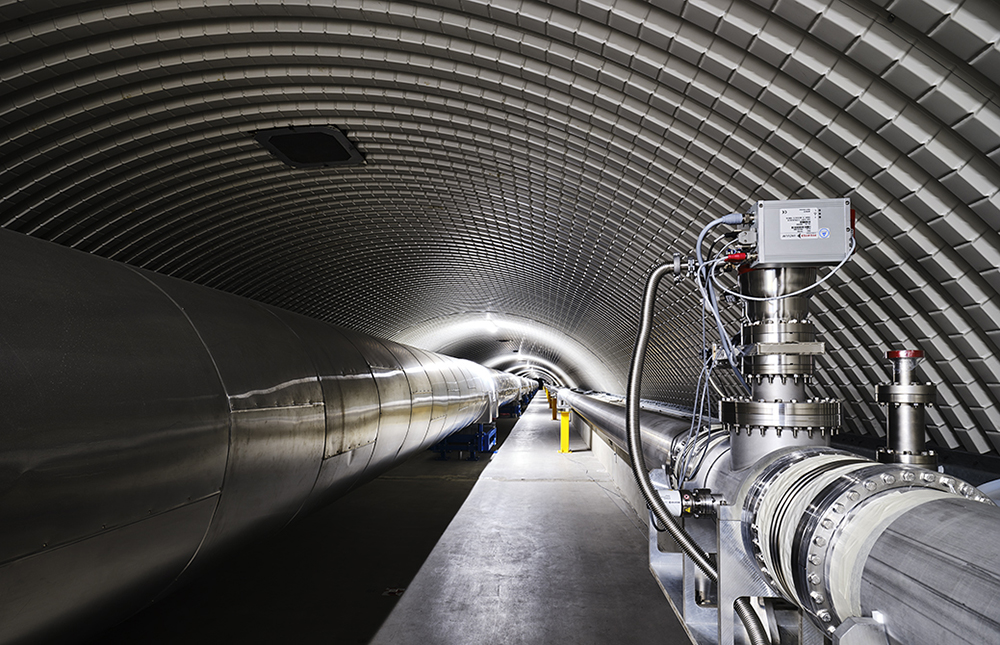
At the impressive sensitivity levels of an interferometric detector such as Advanced Virgo, the quantum nature of light sets the ultimate limit. During the O3 run, ‘squeezed’ light was injected into Advanced Virgo and tuned to reduce quantum noise at high frequencies. One of the most important ongoing upgrades to Virgo is the implementation of a frequency-dependent squeezing system, able to reduce the quantum noise at all frequencies. To achieve this a new 300 meters long ultra-low-loss optical filter cavity was built.
